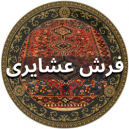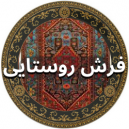Reviews
No data found
Carpet, rug, is a type of woven textile made from cotton, wool, and sometimes silk, which is usually used to cover floors. Hand-knotted and knotted, it is called a carpet. Since carpets and rugs have often had beautiful designs, their decorative aspect is also appreciated today. In the second half of the fifteenth century and during the Safavid era, carpets evolved from a rural craft to an advanced court art. Generally, based on the style, design, and type of weaving, carpets can be classified into three groups: urban carpets, rural carpets, and Nomadic carpets.
Nomadic handwoven carpets are famous as the mother of all carpets; this title has emerged due to its ancient origins and long history in Iranian weaving culture. Many researchers believe that the tradition of carpet weaving in Iran is mostly attributed to tribes and it's likely that carpet weaving is an art that was initially invented by tribes.
In tribal life, having skill in weaving is of great importance. They must master the skill of spinning yarn from their own animal's wool and turn this yarn into a valuable commodity, which is considered an essential and significant economic skill for tribal life. Therefore, carpet weaving is strongly tied to tribal life.
One of the fundamental issues that affect the weaving of carpets and kilims in the life of Iranian nomads is their dimensions and size. Nomads often weave carpets to the size of their tents to have suitable flooring for living in the mountains and plains. However, having horizontal looms for transporting them in the summer and winter pastures brings limitations that directly affect the dimensions of the carpets.
By setting up vertical looms and using them, these problems are resolved, and you can see tribal handwoven carpets with various dimensions. However, this tradition is still preserved in some tribes that continue to live in their tents.
One of the most appealing aspects of Nomadic handwoven carpets is their designs and patterns. These carpets are known as "mind-woven" and are the result of the imaginations and experiences of Iranian tribal weavers. These patterns inspire tribal artists, and these carpets are not woven from charts, making them very different from other carpets.
Given the widespread presence of tribes in Iran, you can see tribal handwoven carpets in various regions of Iran. These tribes also have a great deal of skill in weaving various Iranian carpets, and their products such as Luri rugs, Bakhtiari carpets, Qashqai rugs, Shahsavan rugs, and Afshari carpets are well-known.
To see Nomadic carpets in the online carpet market, you can click (here).
When we delve into the oldest carpets in the world, we can see the footprint of tribes in their weaving. A prominent and prime example of this is the Pazyryk carpet, which is considered the oldest carpet found in the world.
Tribes initially started weaving from animal hides and then from reeds, and they managed to start kilim weaving. After some time and the weaving of various kilims, they turned to weaving handwoven carpets, which were full of beauty and artistic patterns.
Women were among those who were involved in the art and creativity of weaving from the beginning. Since in tribal life, women lived together during cold seasons and had less activity in their tents, they turned to weave handwoven carpets to earn income.
After a while, this matter reached the ears of rural women and men, and they, whose main occupation was animal husbandry and farming, became interested in starting handwoven carpet weaving as a secondary source of income and a second job.
However, the problem that arose here was that among the tribes, horizontal looms were used due to the low height of the tents. However, in rural homes, there was not enough space to use these carpets on the floor; therefore, they used vertical looms.
The use of vertical looms increased the speed of carpet weaving among rural women and made this work known as a suitable option for their income. So rural handwoven carpets became known as a style of carpet weaving with special and distinct features.
Regarding tribal carpets, due to the lack of easy access to cities, often a small number of colors were used in carpet weaving. But in rural carpets, the number of colors increased to 12.
In tribal carpets, most weavings were done based on the imagination of the weaver, while in rural carpets, carpet designs were used for the first time. This made rural weavings have more pattern organization compared to tribal carpets.
Features and characteristics of rural handwoven carpets:
- The fibers used are from sheep wool.
- The colors used in their weaving are mainly from plant-based dyes.
- Rural carpets are usually single-ply.
- The designs and patterns of rural carpets have relatively low complexity.
- The use of plant and animal patterns in rural carpets is widely observed.
- Rural carpets are relatively resistant.
- The knots used in their weaving are mostly Persian knots.
- The sizes of rural handwoven carpets are usually smaller and woven in small dimensions.
- Shirazi rural carpets are natural.
- They may have color bleeding during washing.
- They have different thermal properties in different seasons.
- The designs of the patterns are entirely creative and drawn from the culture of the region.
To see rural carpets in the online carpet market, you can click (here).
Since monarchies held power in Iran, urban carpet weaving, which catered to the needs of the court and its close associates, flourished. Urban carpet weaving gradually became accessible to many city dwellers as class divisions diminished, reaching its current state. The most important features of handwoven urban carpets initially included being crafted by the most skilled weavers under close supervision and meticulous attention to detail. Their designs were executed by prominent artists and their patterns carried ideological significance, meaning that behind their motifs lay concepts serving the interests of the ruling powers and religions. For instance, if they wished to depict a king as a symbol of justice and mercy, they would design a carpet whose motifs radiated light and compassion. Another characteristic of these carpets was that they were made from the finest and most delicate materials, providing not only beauty but also much greater durability compared to other rural and nomadic handwoven carpets.
As urban handwoven carpets became available to the general urban population, court patterns continued to influence the lives of ordinary people, and weaving techniques and materials remained similar to the court versions in many Iranian cities. The variety of patterns in urban handwoven carpets exceeded those of tribal and rural carpets and continues to expand day by day. The reason for this is that unlike tribal and rural patterns, which belong to a specific ethnic group or region, urban carpets have a historical lineage. For example, contemporary Tabriz carpets differ significantly in design and motif from Safavid-era Tabriz carpets.
The primary fibers used in rural and nomadic carpets are sheep wool, whereas in urban carpets, other raw materials such as cotton and silk are also extensively used. In rural handwoven carpets, due to the thickness of the wool and yarn, we do not see breakage in the patterns, and if there are broken patterns, they are not of standard dimensions; they are irregular. This is entirely different in urban carpets, where pattern breakages are visible.
To view urban carpets in the online market, you can click here.
میلیون – میلیون
No items found matching the search criteria
No items found matching the search criteria
No items found matching the search criteria
No items found matching the search criteria
No items found matching the search criteria
No items found matching the search criteria
No items found matching the search criteria
No items found matching the search criteria
No items found matching the search criteria
شرکت ما با بیش از 65 سال سابفه در زمینه خرید و فروش و صادرات فرش دستباف از 5 سال قبل فعالیت خود را بر روی بازار های انلاین متمرکز نمود و در همین راستا بازار دفه زن شکل گرفته است.
هدف این بازار ایجاد ارتباط مستقیم بین تولید کنندگان و فروشندگان فرش دستباف ایرانی از یک سو و خریداران داخل ایران و خریداران خارج از ایران و فروشگاه های فرش دستباف در خارج از ایران از سوی دیگر می باشد


